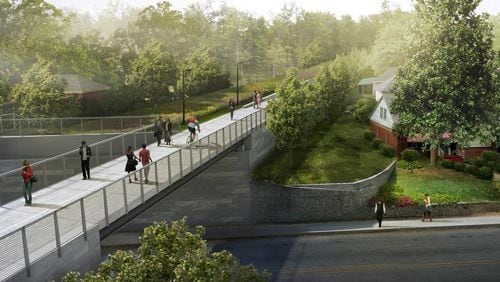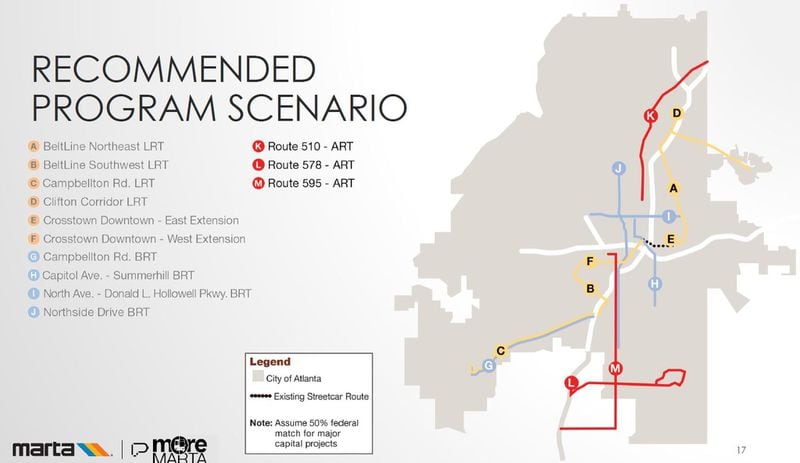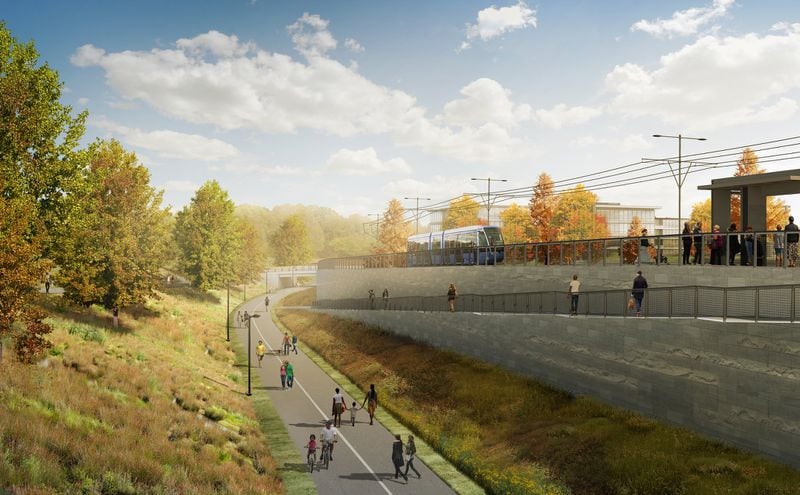A pro-transit group packed a meeting of the MARTA board Wednesday to push for full funding of rail along the 22-mile Atlanta Beltline loop.
Members of Beltline Rail Now, including Ryan Gravel, whose master’s thesis formed the basis of the necklace of trails and planned transit connecting 45 city neighborhoods, say the More MARTA tax is the vehicle to fulfill promises to build Beltline light rail.
VIDEO: More MARTA news
The Great Recession and other factors curtailed construction of rail, which was approved by the MARTA board in 2007.
“Transit has always been part of the Beltline project and we wouldn’t have gotten as far on this project if it hadn’t have been,” he said. “There’s a real accountability as we build it out that we also implement the transit.”
In 2016, Atlanta voters approved a $2.5 bilion MARTA sales tax increase for transit expansion in the city and the MARTA board is preparing the project list.
MARTA officials unveiled a menu of projects in May, including 22 miles of light rail in the city and 18 miles of bus rapid transit (BRT). But the plan included only about seven miles of Beltline rail.
Instead, segments of the northeast and southwest Beltline loop would be built and connected with the Atlanta Streetcar downtown. Those projects would connect with a new light rail line along Campbellton Road in southwest Atlanta, though the Campbellton line would start as BRT before being converted to rail.
The “Clifton Corridor” line to Emory University would receive the largest chunk of rail funding in the plan. Beltline backers contend voters approved the new MARTA tax counting on Beltline rail, and the Emory area was not a part of the city until an annexation that took place after the MARTA vote.
Gravel said there isn’t another alternative to the tax to fund mass transit on the loop. He called the Clifton line a worthy project, but one that should be funded with regional partners.
Betty Willis, who represents Emory and other major employers on the Clifton Corridor, said the area is the region’s largest jobs center without rail transit or freeways and roads there are “gridlocked.”
The Clifton line would help promote regional mobility and equity by connecting workers to jobs, she said. Funding for the line was part of the menu MARTA provided for potential projects when the vote was held in 2016, she said, and the line has been on the regional drawing board for decades.
The Beltline Rail Now plan calls for MARTA to preserve Atlanta’s share of funding for the Clifton line until DeKalb and other regional partners produce their portions of the project.
The Campbellton Road corridor would be re-imagined exclusively as a model BRT system, Gravel said, with raised platform stations, dedicated rights-of-way and signal priority.
Also added to the plan would be infill MARTA rail stations along the Gold and Red lines at Armour Yards, where the Clifton Corridor could start, and Murphy Crossing on the southern end of the Beltline.
Some have called for BRT on the Beltline or other less costly alternatives to rail. Gravel said at a meeting Tuesday night that Beltline rail has had more vetting than any other rail project on the MARTA list, with engineering, environmental work, planning and community engagement all completed.
MARTA’s board expects to make a decision on the project list by September.
MARTA officials have said plans are under review, and more money could flow to the Beltline after public engagement over the summer.
Cathy Woolard, a former Atlanta City Council president and Beltline Rail Now leader, told the MARTA board Wednesday the city needs real public meetings to help guide MARTA to the best decisions, and outreach at public events like summer festivals won’t cut it.
“This is far too complicated and its two and a half or however many billion dollars in transit priorities that you can’t do at a park on a hot day at a card table,” she said. “We need real meetings around the city with real data and we need to know when you’re going to vote and how that is going to play out.”
The story so far
2016: City of Atlanta voters approved a half-penny sales tax to fund a $2.5 billion expansion of MARTA that would be leveraged by federal funds.
May: MARTA unveiled a menu of projects to be funded by the tax, including 22 miles of light rail and 18 miles of bus rapid transit.
Wednesday: A group supporting full Beltline rail pressed the MARTA board to fully fund the project.
About the Author









